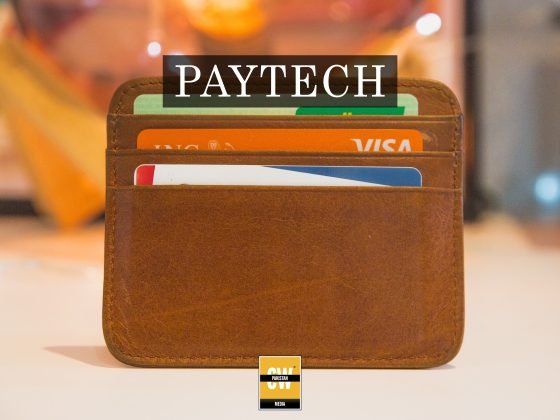In Pakistan, many brands are stuck in a time warp, clinging to traditional advertising models while the world around them speeds ahead into a digital-first age. The digital landscape is evolving rapidly, but local brands are often too slow to adapt, relying on outdated methods that were once effective but now fall short of engaging today’s increasingly digital audience. While the internet has woven itself into the fabric of everyday life for millions, especially younger generations, brands are missing the chance to connect in meaningful ways. The result is an advertising ecosystem stuck in the past, unable to keep pace with the demands of the modern consumer. Pakistan today has more than 241 million people, and with a median age of just around 20 years, nearly two-thirds of the country’s population is under 30. These aren’t just future consumers — they are the current market. This demographic reality is the first half of the GEN connection: generations that have grown up digital, moving faster than the brands trying to reach them.
At the heart of this shift is social media. Platforms like Instagram, TikTok, and Facebook are more than just spaces to showcase advertisements — they are dynamic, interactive ecosystems that require two-way communication. Yet many traditional advertising agencies still treat these platforms as one-way broadcasting tools, pushing messages out to an audience without leveraging the full potential for engagement. The difference is stark: consumers today aren’t just looking to consume content — they want to interact with it, share their opinions, and even participate in its creation. TikTok alone now reaches more than 66 million adults in Pakistan, which is about 46 percent of the adult population, and nearly half of these users are between the ages of 16 and 24. They spend close to an hour each day on the platform. These are not passive audiences waiting for a commercial break; they are curators, remixers, and critics, capable of amplifying or dismantling a brand message in minutes. Brands that can engage in real-time conversations, answer questions, or involve their audience in co-creating content will build a sense of community and loyalty. Unfortunately, for many traditional agencies, this approach is a bridge too far, as they continue to rely on static, pre-packaged campaigns that do little to reflect the dynamism of the digital world.
At the same time, the old-school ways of advertising are increasingly irrelevant as data and AI-driven technologies redefine how brands connect with consumers. Digital agencies, which are increasingly the heart of modern marketing strategies, now have access to more sophisticated tools than ever before. These agencies leverage data to create hyper-targeted campaigns, personalizing content based on individual preferences, behavior, and even real-time sentiment. Through generative AI, brands can gain a detailed understanding of consumer intent, predict future purchasing behavior, and automate content delivery across channels. This is the second half of the GEN connection: generative AI that can actually keep up with the scale and speed of demographic change.
This level of precision has turned traditional advertising models upside down, as brands no longer need broad, one-size-fits-all campaigns. Instead, they can craft highly relevant, personalized experiences for consumers at a fraction of the cost and effort it once took. Globally, nearly 70 percent of all media spend is already being run through AI-enabled platforms, and the same shift is accelerating in Pakistan. The contrast between what is possible today and what many local agencies are still delivering could not be starker. The billboard-and-TV commercial mindset looks increasingly like a relic of a past age.
The shift from traditional advertising agencies to digital-first strategies doesn’t just affect how content is created — it fundamentally changes the role of the agency itself. Traditional agencies, which were once the gatekeepers of creativity and strategy, are now struggling to maintain their relevance in a world that demands agility, data-driven decision-making, and real-time engagement. The big-budget ad campaigns of the past, from TV spots to large-scale billboards, are slowly being replaced by fast, data-backed campaigns created and optimized in the digital space. In fiscal year 2023–24, Pakistan’s ad market crossed 98 billion rupees, with digital posting a year-on-year growth rate of more than 35 percent, compared to 15 percent growth for television. While TV still commands the largest single slice of spend, digital is now the fastest-growing medium, signaling where audiences — and attention — are headed. With the rise of e-commerce and the growing importance of online consumer behavior, digital agencies are becoming the new architects of brand strategies. They’re not just marketing products — they’re driving sales, optimizing customer journeys, and creating immersive brand experiences that span multiple platforms. In this new era, it’s not about the size of the campaign; it’s about the precision of the strategy and how effectively it meets the customer where they are.
E-commerce platforms are playing a key role in this transformation, as the shift from physical stores to online shopping accelerates. Brands are no longer reliant on traditional retail channels; instead, they are creating digital-first experiences that cater to the needs and preferences of the modern shopper. AI-powered recommendation engines, personalized shopping experiences, and seamless mobile interfaces are just the beginning. Pakistan now has more than 116 million internet users, and over 66 million active social media accounts. These numbers feed directly into commerce: consumers expect more than just a simple purchase — they demand a curated journey that begins with personalized ads, continues through tailored product recommendations, and ends with a seamless checkout experience. The days when brands could rely solely on TV ads and print campaigns to drive foot traffic are over. Now, it’s all about creating integrated, digital-first experiences that captivate, convert, and retain customers.
The rise of digital agencies, e-commerce, and AI-driven marketing strategies is not just pushing traditional advertising agencies to the sidelines — it’s making them obsolete. In a world where speed, precision, and personalization are paramount, the traditional model simply can’t keep up. Digital agencies that specialize in e-commerce, social media, and AI-powered campaigns are now the ones driving the conversation, shaping brand identities, and influencing consumer behavior. The future of advertising lies in real-time engagement, hyper-targeted content, and seamless customer journeys. The brands that succeed in this new age will be the ones who understand that marketing is no longer about selling a product — it’s about creating personalized, immersive experiences that resonate with the modern consumer.
AI is leading the charge here, offering tools that allow brands to craft highly personalized campaigns at scale. With generative AI, brands can automate content creation, optimize advertising spend, and deliver tailored experiences to consumers based on their browsing history, social media activity, and even their mood. These technologies are transforming the creative process, allowing brands to produce content that is not only relevant but also compelling — something that traditional advertising methods simply cannot achieve. As AI continues to evolve, the need for large creative teams and traditional agencies will shrink, replaced by smaller, more agile digital teams that can harness the power of AI to optimize campaigns on the fly. The speed and efficiency of digital marketing will ultimately make large advertising agencies redundant, as brands embrace the capabilities of e-commerce platforms, data analytics, and real-time engagement.
The advertising industry is experiencing a seismic shift, and it’s clear that traditional agencies are no longer equipped to thrive in this new digital landscape. As e-commerce continues to grow and digital-first strategies dominate the marketplace, digital agencies are becoming the new driving force behind brand success. By embracing demographics and generative AI together — the true GEN connection — brands can now create smarter, faster, and more personalized campaigns that resonate with their audiences. The old model of advertising is on its way out; what we’re witnessing now is the dawn of a new era, one where agility, precision, and customer-centricity reign supreme. In this world, traditional advertising agencies are quickly becoming relics of the past, while digital agencies rise to take their place as the true architects of modern marketing.
Follow the SPIN IDG WhatsApp Channel for updates across the Smart Pakistan Insights Network covering all of Pakistan’s technology ecosystem.





